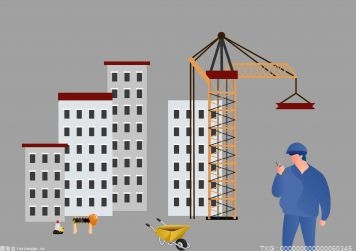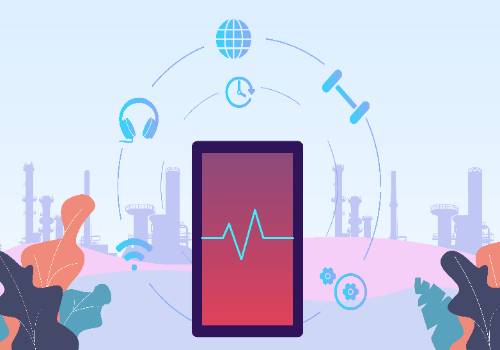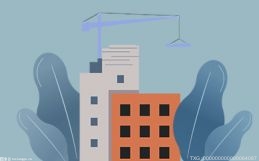01、事故类型
 (相关资料图)
(相关资料图)
What the type of casualty
非常严重的海上伤亡事故:一水被锚机爆炸的碎片击中
Very serious marine casualty: able seaman struck by debris from exploding windlassMotor
02、事故经过
What happened?
一艘总吨39000的散货船在港口主管机关指定的锚位锚泊,等待泊位装煤。第二天,主管机关指示该船将其锚位向南移,然后该船重新抛锚,抛左锚七节甲板。该锚地53米深的海床是由细沙和贝壳组成的混合物。
While waiting for its berth to load a cargo of coal, a 39,000 GT bulk carrier anchored in a designated anchoring position as provided by the port authority. The next day the port authority instructed the vessel to shift its anchor position further south, and the vessel then re-anchored and brought up to seven shackles on deck on its port anchor. The nature of the sea-bed at a depth of 53 metres was a mixture of fine sand and shells.
两天后,该船仍在锚地的时候,海上风速增加到6级,海浪约为2-3米。大副被派去检查锚链。大副报告说,锚机上有灰尘,锚链有受力的情况,船艏的制链器也弯曲了。
Two days later, while still at anchor the wind speed increased to Force 6. Sea swell was about 2-3 metres. The chief mate was sent to check on the anchor cable. The officer reported dust coming out of the windlass, there was excessive weight on the anchor cable and the bow securing pin was bent.
右舷锚的船艏制链器被用来替换左舷锚链上的制链器,后者也在不久后弯曲了。然后船舶制作了一根不锈钢杆来代替新弯曲的制链器。
The bow securing pin from the starboard anchor was used to replace the one on the port anchor cable, which also got bent shortly afterwards. A stainless steel rod was then fabricated on board to replace the newly bent pin.
在夜间,被要求检查锚链状况的值班驾驶员报告说,该船与最近船舶的距离正在缩短,并确认本船正在走锚。于是呼叫了机舱备车。锚机的液压动力装置被打开,大副和六名船员在艏楼准备起锚。当锚链垂直时,船长使用主机(半速前进),使本船驶离附近船舶。当该船前进时,锚链向后,拖锚前进。随后,锚链受力减小,锚链又回到了垂直的状态,起锚重新开始。船长随后通知主管机关打算转移抛锚的位置。
At night time the duty officer, who was asked to check on the condition of the cable, reported that the distance from the nearest ship was reducing and confirmed that own vessel was dragging anchor. Stations were called and main engines were prepared. The hydraulic powerpack for the windlass was switched on. The chief officer, along with six crew at the forecastle,prepared to heave the anchor. As the cable was up and down, the master used the engines(half ahead) to keep the vessel away from dragging onto the nearby ship. The anchor cablelay astern as the vessel moved ahead and dredged on its anchor. Subsequently, moderateweight came on the cable and the cable came back to up and down. Heaving of the anchorresumed. The master then notified the port authority of his intention to shift the anchor position.
随后,锚链的方向在不断的发生变化。在某一时刻,当锚链向船尾倾斜时,锚无法再向上升起。在继续尝试起锚的过程中,船员看到左舷锚机发出火花。锚机操作员一水旋紧锚链刹车。不久之后,锚机马达发生爆炸,爆炸产生的飞溅碎片击中了该水手的脖子和下巴。
Subsequently, the lay of the anchor cable changed from up and down to ahead medium stay to abeam short stay to astern. At some point when the cable was leading astern the anchorcould not be heaved up any further. As the attempt to heave the anchor continued, the crew saw sparks flying out of the port windlass. The windlass operator, an able seaman, applied the brake on the anchor cable. Soon after, the windlass motor exploded and flying debris from the explosion hit the windlass operator on his neck and jaw.
其他船员停止了对锚机的供电,并重新制动。船员们对受伤水手进行了现场急救和伤口的按压。船长请求医疗援助。一小时后,受伤的水手不再有反应,随后被救护人员宣布死亡。之后用右舷锚机将左舷的锚吊了起来。发现锚与海床上一条废弃的锚链搅在了一起。
The power to the windlass was stopped by the other crew and the brake was re-applied.On-site first aid and pressure to the wound of the injured operator were applied by the crew.The master requested medical assistance. An hour later the injured operator stoppedresponding and was declared deceased by paramedics an hour thereafter.The port anchor was subsequently heaved up using the motor from the starboard windlass.The anchor was noted to be fouled with an abandoned anchor chain on the sea-bed.
03、事故原因
Why did it happen?
左舷锚起液压马达反向操作会导致液压马达内部因正向流量作用造成压力严重上升,从而使液压马达爆炸。
Operation of the port windlass hydraulic motor in the reverse direction would have resulted in severe rise of hydraulic pressure inside the motor due to the positive displacement pumping action, causing the motor to explode.
由于拖拽锚链,船舶在恶劣条件下剧烈晃动和倾斜造成的冲击载荷,链条与船体摩擦造成的摩擦力,以及被遗弃的锚链缠绕,都超过了锚机的负荷。
The loading capacity of the windlass was exceeded due to dragging anchor,shock loading due to heavy rolling and pitching of the vessel in severe conditions,frictional force due to chain rubbing against the hull and fouling of the anchor by an abandoned anchor chain.
船长没有充分评估锚地未来的天气状况,没有在天气恶化前做好起锚的准备。
The master had not fully assessed the future weather conditions at the anchorage to prepare for heaving the anchor before the weather worsened.
锚机制造商没有在现有船舶的锚机周围提供任何安全防护装置来保护船员。然而,在新的船舶上却提供了这些防护装置。
The windlass manufacturer had not provided any safety guards around the windlass on existing vessels to protect the crew. These however had been provided on new vessels.
04、事故启示
What can we learn?
在船上进行适当的培训和熟悉是必要的,以确保正确的处理锚机,特别强调的是诸如走锚、恶劣的天气条件、锚有污垢等情况下,可能会对锚机设备造成过大的负荷。
Appropriate training and familiarization on board is necessary to ensure thecorrect handling procedure for the anchor windlass and vessel, with specialemphasis on circumstances such as anchor dragging, adverse weatherconditions, anchor fouling, etc. which may place excessive load on the windlassequipment.
恶劣的天气条件会给锚机马达带来过大的负荷,船员应及时采取适当的预防措施以避免这种负荷。
Severe weather conditions can place excessive loads on the windlass motor and ship"s crew should take appropriate precautions in a timely manner to avoid such loads.
物理防护装置可以保护船员免受锚机液压马达潜在爆炸的影响。
Physical guards may protect crew from potential explosion of a windlass hydraulic motor.











































































